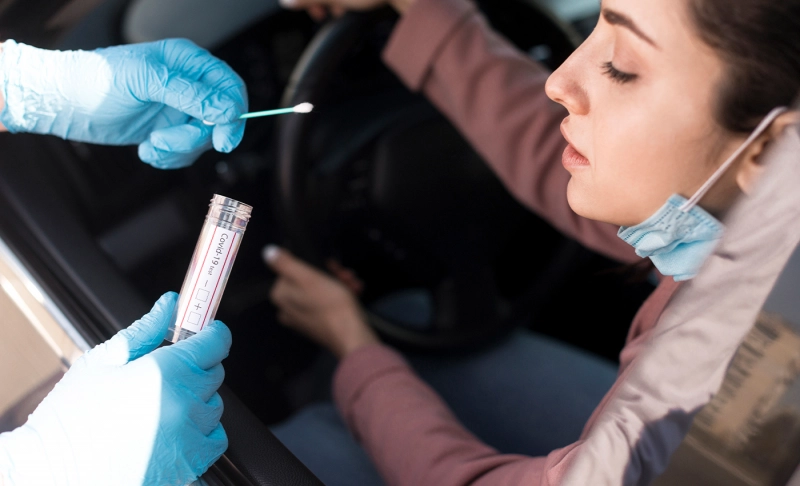By: Umme Kulsum
January 19 2022

Several layers of tissues separate the brain and nasopharynx that cannot be accessed using swabs. Hence, swab tests cannot damage blood-brain wall.
Several layers of tissues separate the brain and nasopharynx that cannot be accessed using swabs. Hence, swab tests cannot damage blood-brain wall.A viral post on Facebook with more than 3,000 views suggested that the nasal swabs used for COVID-19 tests can damage the blood-brain barrier and create a direct entrance to the brain. However, this is false. The swab with which the tests are done cannot access the blood-brain barrier and damage it. Shawn Nasseri, MD, throat surgeon in Los Angeles, told USA Today, "there are three layers of protection in the nose. There's the mucosal lining, which covers the inside of the nose. The dura mater's inside, which means 'tough mother,' is a tough lining of skin around the brain. It's hard to penetrate through it without something sharp," the WebMD reported. According to Queensland Brain Institute (QBI), the brain has many layers to protect it from damage and is shielded with a 7mm thick skull. The blood-brain barrier provides a "defense against disease-causing pathogens and toxins that may be present in our blood." Hence, the swab stick inserted into the nose would need to break through these layers of tissue and dig through a bone and the blood vessels to access the blood-brain barrier. Therefore, the swab cannot get to the brain barrier without considerable force that damages the layers of tissue and bone. The nasal swab is a thin, flexible stick with cotton at the tip that will slightly brush into the nose or throat to collect a sample of phlegm. Moreover, the PCR test for COVID-19 is an accurate and reliable test for diagnosing COVID-19. Nasal swabs from PCR or lateral tests will not harm anyone. Nasal swabs tests are performed in the nasopharynx, and it has nothing to do with the blood-brain barrier. The COVID-19 pandemic has given rise to a lot of potentially dangerous misinformation. For reliable advice on COVID-19, including symptoms, prevention, and available treatment, please refer to the World Health Organization or your national healthcare authority.